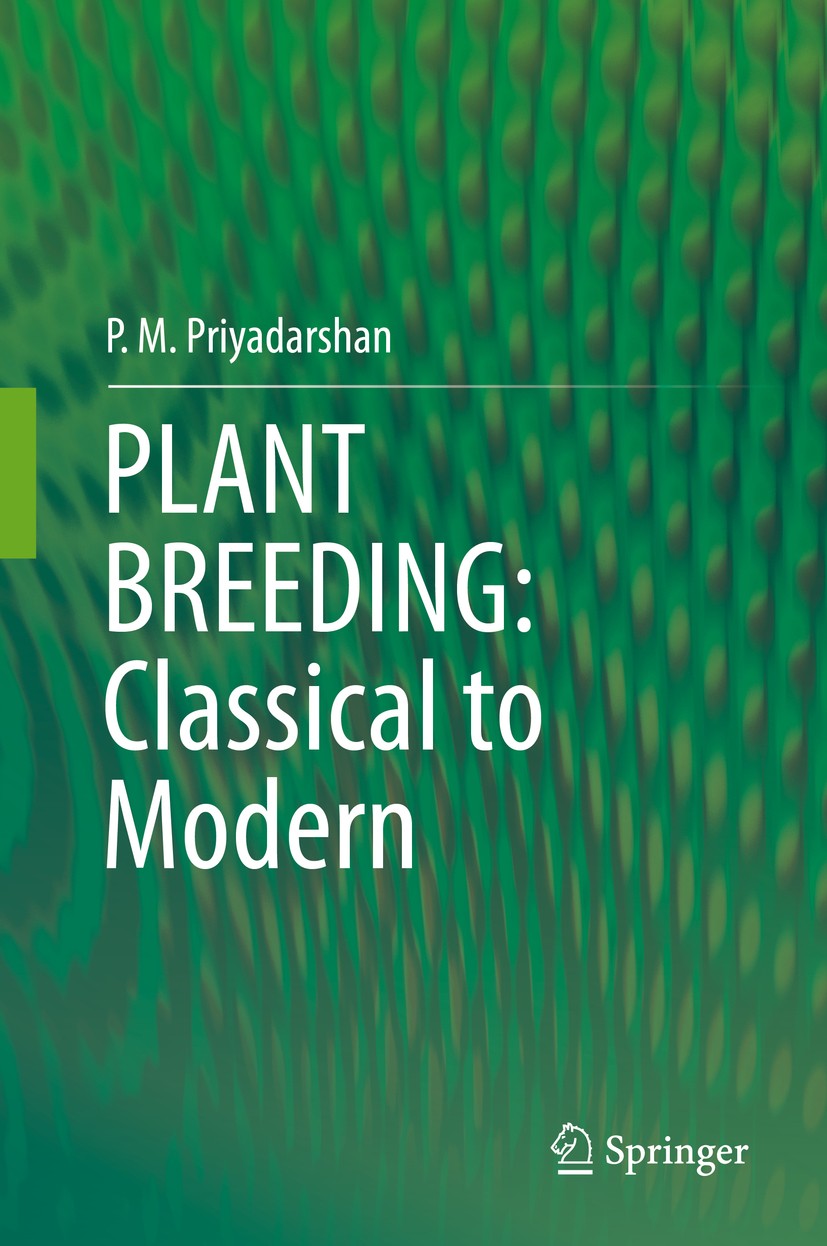| 书目名称 | PLANT BREEDING: Classical to Modern | | 编辑 | P. M. Priyadarshan | | 视频video | http://file.papertrans.cn/741/740230/740230.mp4 | | 概述 | Provides a detailed overview of conventional and modern approaches to plant breeding.Addresses all the topics required for the curriculum of undergraduate and master’s students.Covering plant breeding | | 图书封面 |  | | 描述 | .This book offers a detailed overview of both conventional and modern approaches to plant breeding. In 25 chapters, it explores various aspects of conventional and modern means of plant breeding, including: history, objective, activities, centres of origin, plant introduction, reproduction, incompatibility, sterility, biometrics, selection, hybridization, methods of breeding both self- and cross- pollinated crops, heterosis, synthetic varieties, induced mutations and polyploidy, distant hybridization, quality breeding, ideotype breeding, resistance breeding, breeding for stress resistance, G x E interactions, tissue culture, genetic engineering, molecular breeding, genomics, gene action and varietal release. .The book’s content addresses the needs of students worldwide. Modern methods like molecular breeding and genomics are dealt with extensively so as to provide a firm foundation and equip readers to read further advanced books. . .Each chapter discusses the respective subject as comprehensively as possible, and includes a section on further reading at the end. Info-boxes highlight the latest advances, and care has been taken to include nearly all topics required under the curri | | 出版日期 | Textbook 2019 | | 关键词 | Plant Breeding; Plant Genetics; Biotechnology; Molecular Breeding; Genetic Engineering; Genomics; Biometri | | 版次 | 1 | | doi | https://doi.org/10.1007/978-981-13-7095-3 | | isbn_softcover | 978-981-13-7097-7 | | isbn_ebook | 978-981-13-7095-3 | | copyright | Springer Nature Singapore Pte Ltd. 2019 |
The information of publication is updating

|
|
 |Archiver|手机版|小黑屋|
派博传思国际
( 京公网安备110108008328)
GMT+8, 2025-11-22 17:22
|Archiver|手机版|小黑屋|
派博传思国际
( 京公网安备110108008328)
GMT+8, 2025-11-22 17:22


